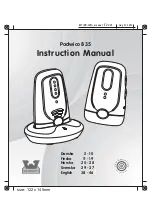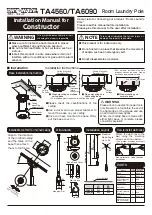
1. Safety precautions
Observe these instructions and keep them located near the battery for future
reference.
The Material Safety Datasheet can be downloaded from the “Material Safety
Datasheet menu” located on the
.
Work on a li-ion battery should be carried out by qualified personnel only.
1.1. General warnings
While working on a li-ion battery wear protective eyeglasses and clothing.
Any uncovered battery material such as electrolyte or powder on the skin or in the
eyes must immediately be flushed with plenty of clean water. Then seek medical
assistance. Spillages on clothing should be rinsed out with water.
Explosion and fire hazard. The terminals of a li-ion battery are always live, therefore
do not place metallic items or tools on top of a li-ion battery. Avoid short circuits, too
deep discharges and too high charge currents. Use insulated tools. Do not wear any
metallic items such as watches, bracelets, et cetera. In case of fire, you must use a
type D foam or CO2 fire extinguisher.
Do not open or dismantle the battery. Electrolyte is very corrosive. In normal working
conditions contact with the electrolyte is impossible. If the battery casing is damaged
do not touch the exposed electrolyte or powder because it is corrosive.
Li-ion batteries are heavy. If involved in an accident they can become a projectile!
Ensure adequate and secure mounting and always use suitable handling equipment
for transportation.
Handle with care because a li-ion battery is sensitive to mechanical shock.
Do not use a damaged battery.
Do not wet the battery.
1.2. Charge and discharge warnings
Too deep discharges will seriously damage a li-ion battery and can even be
dangerous. Therefore, use of an external safety relay is obligatory.
Lithium Battery Manual
Page 1
Safety precautions





































